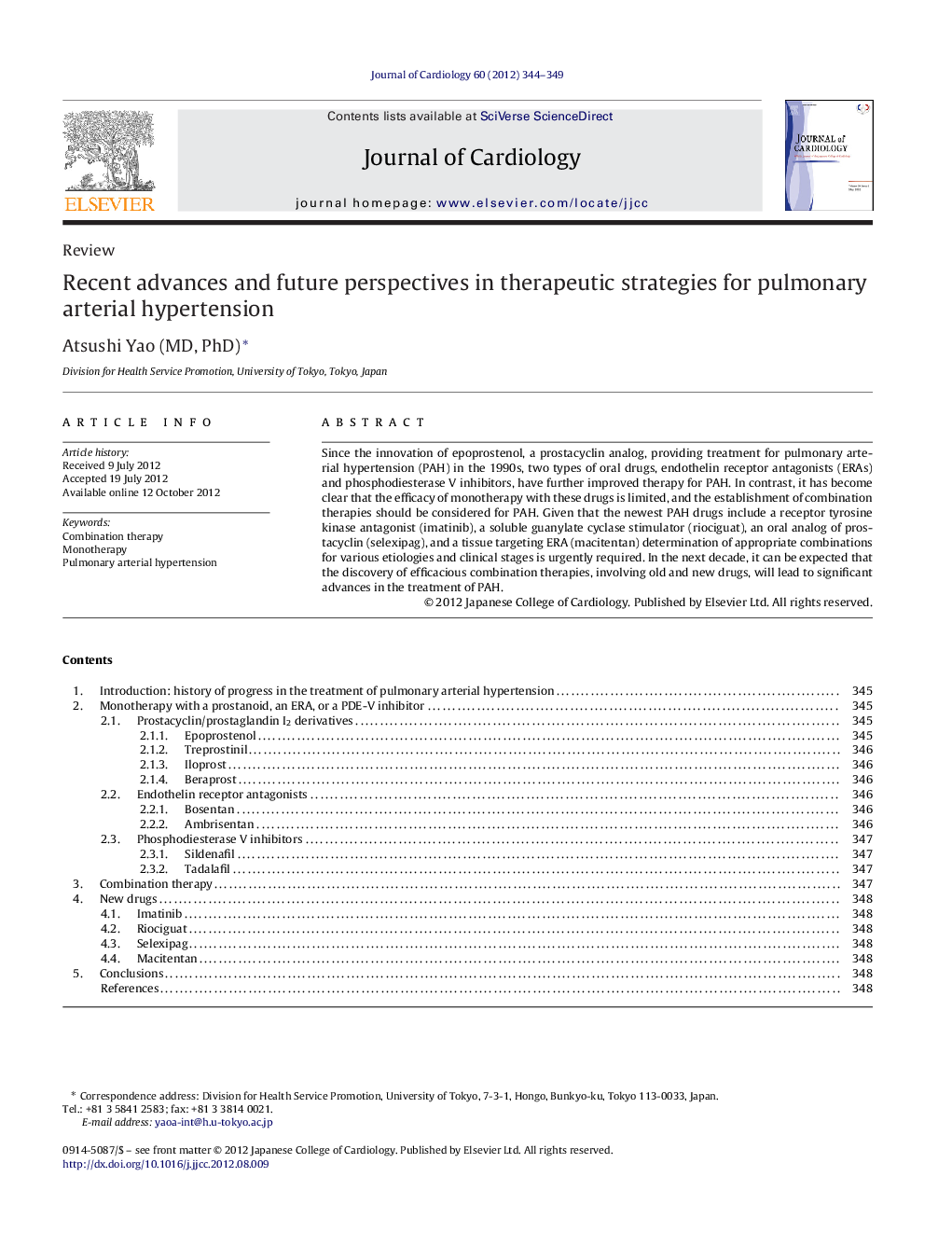| Article ID | Journal | Published Year | Pages | File Type |
|---|---|---|---|---|
| 2963181 | Journal of Cardiology | 2012 | 6 Pages |
Since the innovation of epoprostenol, a prostacyclin analog, providing treatment for pulmonary arterial hypertension (PAH) in the 1990s, two types of oral drugs, endothelin receptor antagonists (ERAs) and phosphodiesterase V inhibitors, have further improved therapy for PAH. In contrast, it has become clear that the efficacy of monotherapy with these drugs is limited, and the establishment of combination therapies should be considered for PAH. Given that the newest PAH drugs include a receptor tyrosine kinase antagonist (imatinib), a soluble guanylate cyclase stimulator (riociguat), an oral analog of prostacyclin (selexipag), and a tissue targeting ERA (macitentan) determination of appropriate combinations for various etiologies and clinical stages is urgently required. In the next decade, it can be expected that the discovery of efficacious combination therapies, involving old and new drugs, will lead to significant advances in the treatment of PAH.
